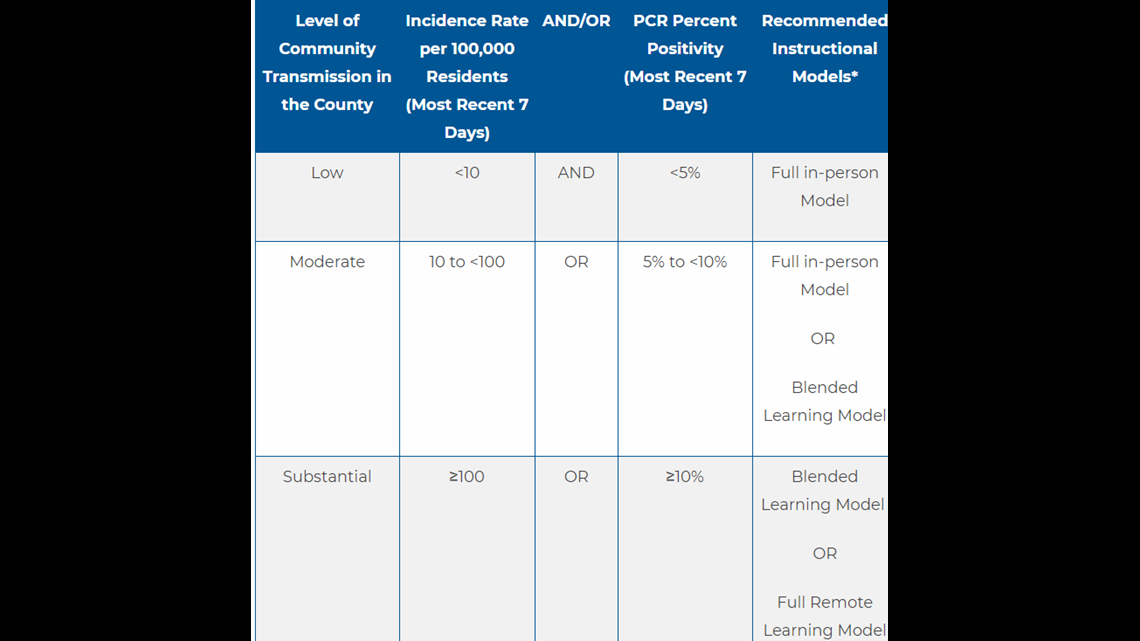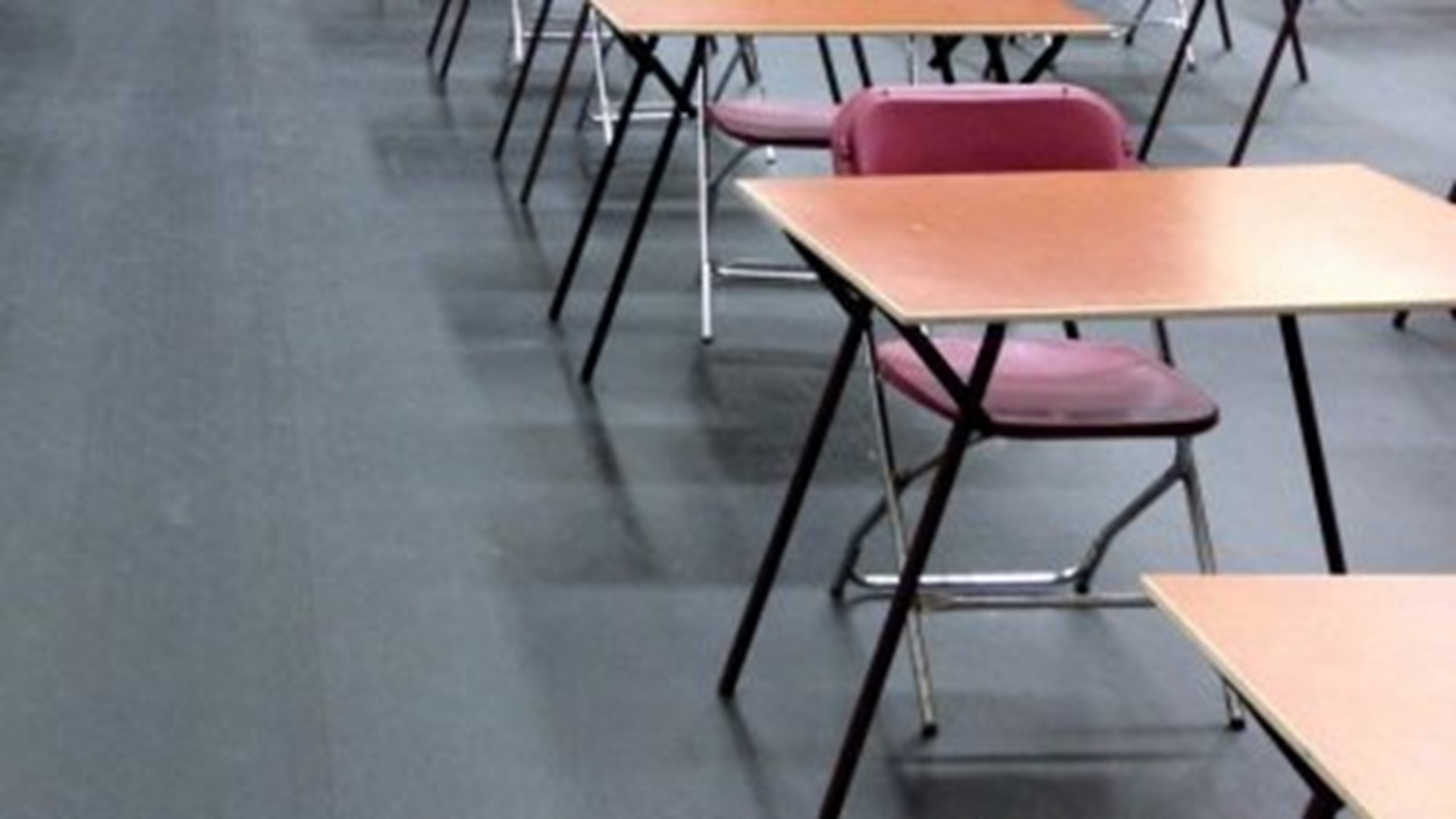PENNSYLVANIA, USA — The sight of backpacks and lunchboxes filled the sidewalks again as children walked hand-in-hand with their parents up to the doors of Foose Elementary school in Harrisburg on Tuesday. It marks the the first time since March 2020 that Harrisburg School District students have set foot inside a classroom.
Districts across the Pennsylvania have a big decision to make on whether to bring students back in person as the CDC is updating its guidelines for schools.
Pennsylvania's Department of Education is aligning its guidelines with those of the CDC announcing that it recommends K-12 public schools in counties with a moderate level of community transmission of COVID-19 to now consider returning students to full in-person instruction in addition to blended/hybrid learning model. The state recommended counties with a substantial level of community transmission should consider blended/hybrid learning in addition to remote learning for K-12 students.
See the chart the state is providing to districts to determine in person instruction:


For Harrisburg School District, kindergarten through second grade will now go to school on a hybrid schedule returning to in-person instruction a few times a week. The district said it has implemented enhanced safety measures such as thermal imaging cameras that can capture up to 10 students temperatures per second. Desks are separated to maintain social distancing with dividers in place. Enhanced cleaning measures will also take place throughout the day.
“We remain committed to doing everything we can to create the conditions for a return to in-person instruction as soon as safely possible,” said Acting Secretary of Education Noe Ortega. “Our updated instructional model recommendations create additional flexibilities for school leaders to make decisions at the local level consistent with best practices and with public health and safety at the forefront.”
Pennsylvania said for the week ending April 2, there were five counties in the low level of transmission, 17 counties in the moderate level of transmission, and 45 counties were in the substantial level of community transmission:
- Low – Cameron, Forest, Fulton, Potter, Sullivan
- Moderate – Bedford, Blair, Cambria, Clarion, Crawford, Erie, Fayette, Indiana, Jefferson, McKean, Mercer, Snyder, Somerset, Tioga, Union, Venango, Warren
- Substantial – Adams, Allegheny, Armstrong, Beaver, Berks, Bradford, Bucks, Butler, Carbon, Centre, Chester, Clearfield, Clinton, Columbia, Cumberland, Dauphin, Delaware, Elk, Franklin, Greene, Huntingdon, Juniata, Lackawanna, Lancaster, Lawrence, Lebanon, Lehigh, Luzerne, Lycoming, Mifflin, Monroe, Montgomery, Montour, Northampton, Northumberland, Perry, Philadelphia, Pike, Schuylkill, Susquehanna, Washington, Wayne, Westmoreland, Wyoming, York
Pennsylvania leaders remind everyone the update is a recommendation and not a mandate. They added the decision to return to in person instruction can also be based on factors including the size of the school building, the classroom size, resources, proportion of staff and students with special needs and underlying health conditions, and the ability to accommodate learning with equal access for all students.

